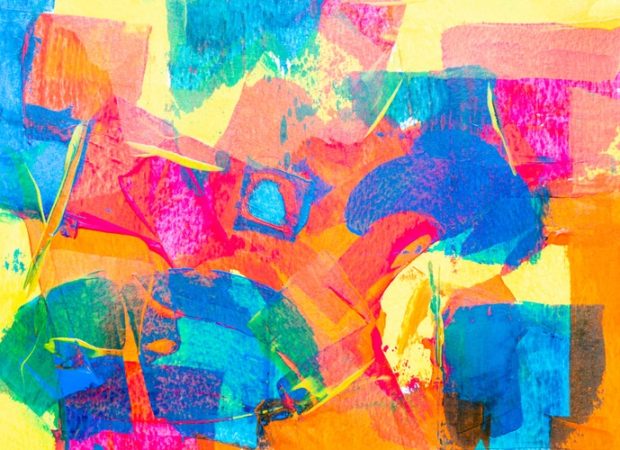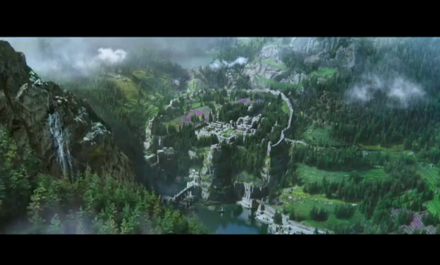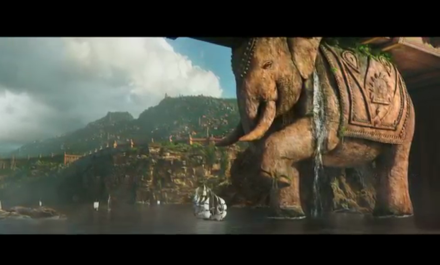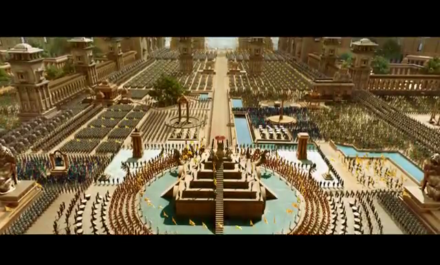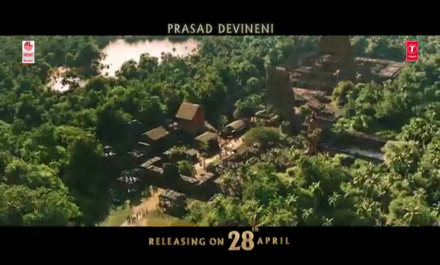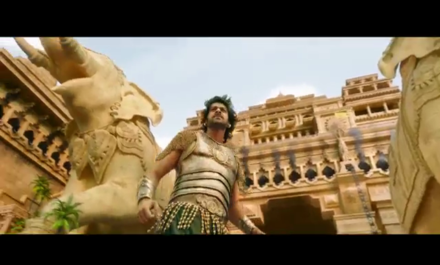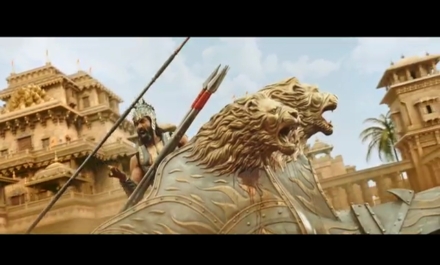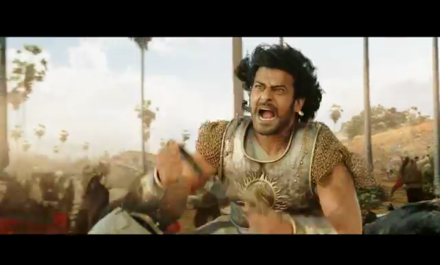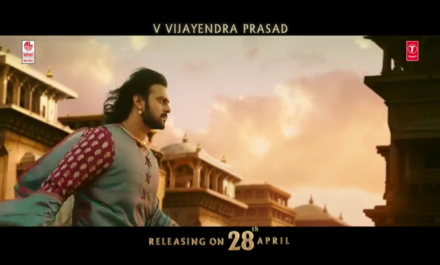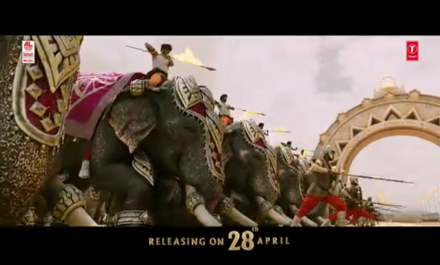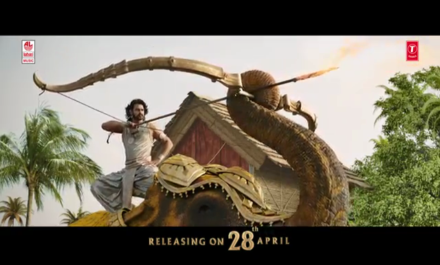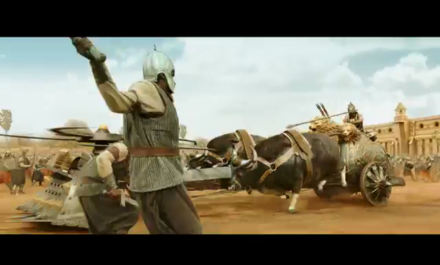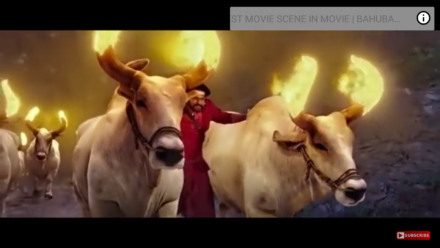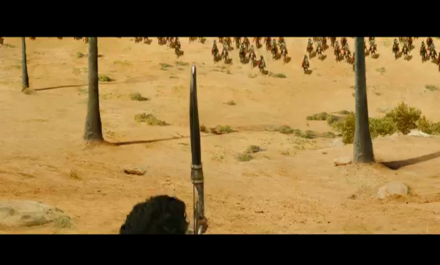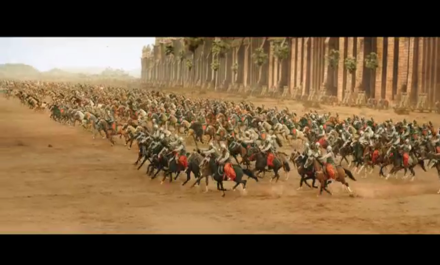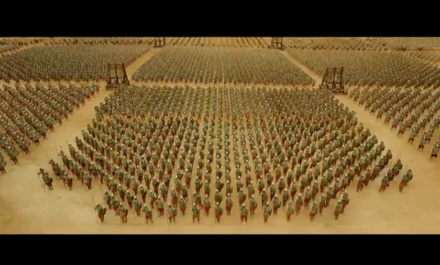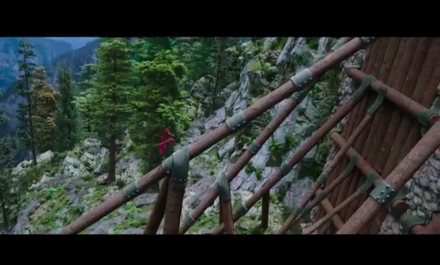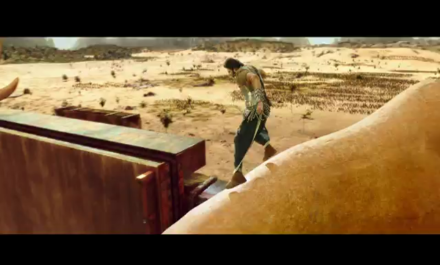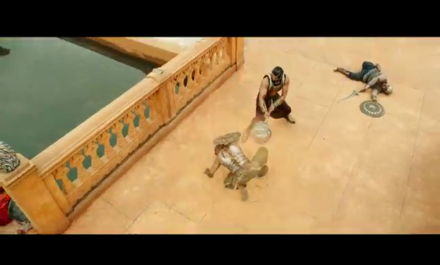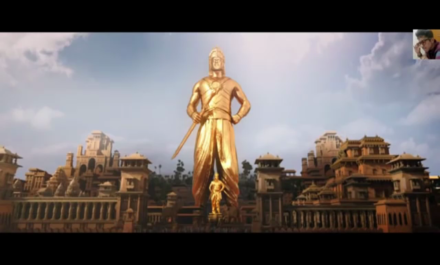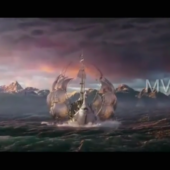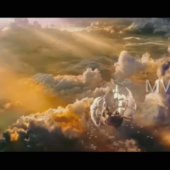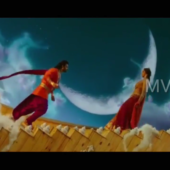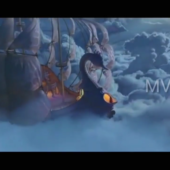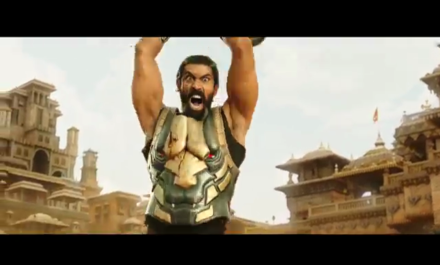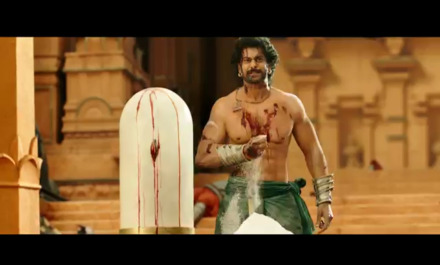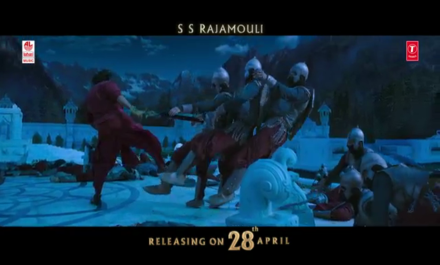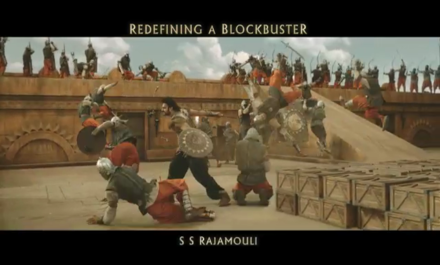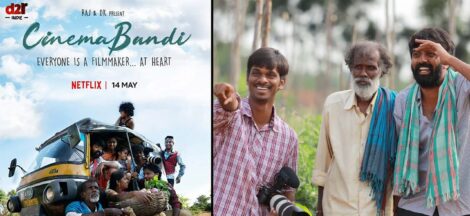My last movie review of Baahubali was about the VFX in the movie. It’s time for a review again and this time it’s about the concluding part of this movie.
No, this review is not going to be about the story; because, the story itself is wafer thin and can be summarised in a few sentences. At times, while watching it, you couldn’t help but wonder if it needed 2, almost 3 hour long movies to tell such a simple story. And this is probably the reason why many reviewers have rated the movie as an average one.
This is going to be about the various other aspects that I noticed about the movie. Some very good and some not so good.
Before I begin, I’d recommend you to see the movie in large screen cinema, because it is made to be seen on one and is definitely worth one see at least.
The broadly good – VFX:
The movie starts off on a right note, the story of the first part is summarised rather well in the title slates and it made me look forward to the VFX work to follow.
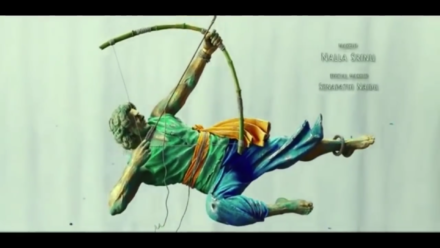
But almost from the first shot, you tend to notice the CG and green screen work. In any given frame, you can make out which part was CG just by looking at the contrast – the high tones of the backgrounds – the mountains, the palaces – and many a times the colouring in the foreground – flowers, foliage, boats et al. – stand out and tell you that there is something unnatural in a frame. Like last time, where ever CG was used to extend backgrounds, they were rather very well done, it’s those long shots that were rather comic-bookish.
There was one shot towards the climax where I couldn’t help but notice tall palm trees placed against clear blue skies. They stand out like sore thumb and I wondered if they were placed there for a purpose and in the next scene I knew why.
The CG animals, are good in parts and bad in parts. And it starts from the first scene, where the hero tackles and tames an elephant. While you can tell which is a real elephant (close ups) and which is not, the one which is CG is rendered rather well in some parts and not so well in some others. Then there are the bulls and bisons, again rendered well in parts (the front and side shots) and the not so well (the back shots). There is one where Bhallaladeva‘s chariot is exiting the frame and you can make out the bisons leg’s are floating in the air. It made me wonder if his chariot was pulled by bisons in the first part though.
Like last time, the scenes with crowds aren’t rendered well. The foot soldiers and people on horses and the horses themselves sometimes are stiff and move unnaturally at times. Enough for you to tell that it’s a bad CG job.
The worst of the CG has to be the golden statue of Bhallaladeva which is part of an extended climax. I never liked the way it was rendered in the first part and didn’t like it in this one either. Something that’s so critical to building a character should probably have been done better. Plus it’s a non living thing, how difficult could it have been to blend it into the scenes it was in. There was also a scene with a lens flare added which made me laugh out loud.
Then there is the hamsa naava song (which probably vies with the waterfall song – Dhivara – from the first part), where the CG is rather cartoonish. But I’ll completely forgive it for the fantasy it depicts and the terrific lyrics, music and choreography which accompany it.
To summarise, the CG is rather well done for most part of the movie – you just have to tell yourself that it was done in India on a limited budget and time and not in Hollywood. While it is on par with what was done for the first first part of the series; I just hoped it had been better. Nonetheless, I am sure, the CG done for this movie will be a benchmark for an Indian movie for years.
The good – The characters:
I think all the lead and supporting characters, did they parts uniformly very well. I couldn’t help but wonder what would Rana have done with more dialogues – he was menacing enough without them. The only wee bit of issue I had was when in some closeup shots, his face looked dried out while in some it wasn’t (an issue of continuity given such a long schedule?). The revelation of course was Prabhas, who built a body more beefed up than that of Rana, truly living out both the characters he played in flesh.
Then there are the women characters which are extremely strongly written; but with some minor flaws. There were moments when I wondered why a character blurted out what they said in critical sequences (especially Devasena) but I would presume that’s because not enough time was given to finely etch their characters.
The good – The screenplay:
As I mentioned right at the beginning, the plot is wafer thin (read it’s plot) and has some glaring holes, but there is not one moment when you are bored (and here I must admit that I was bored when watching a few Harry Potter / LOTR films). The director, Rajamouli surely is a wonderful storyteller and knows how to keep the viewers glued to their seats. Even during the song sequences, he keeps the storytelling on and adds those wonderful little details building the characters. By the end of the first half, I knew I had my money’s worth! Everything in the second half was a bonus!!
The good – the music, songs and background:
Not having heard any song before I stepped into the theater, I had moderate expectations from the sound track. But must say the music was a pleasant surprise (review here). Like in the first part, the songs stay with you after you step out of the theater and you want to listen to them again and again for a few days after. Many reviewers (especially of the Hindi version) panned the background score as being relentlessly loud. But, I’d say it is one of the best parts of the movie. The background score builds up the overall experience on the big screen.
The good – the action sequences:
As I wrote in my previous review, Baahubali 1 action sequences reminded me of 300, Matrix, Gladiator, Zorro, Avatar and The LOTR. I think most of the copying was done in that part. So, a number of action pieces in this part looked very original. Especially some slow-mo closeup action shots had this graphic novel framing and feeling to them – very 300 in framing – but still very original. And, it is where the cinematographer stands out and tells you how good a job he had done in both the movies.
The bad – The marketing:
How can I end a review without commenting on this one! I think Dharma and it’s team have gone overboard in promoting the movie with a simplistic ‘why Kattappa killed Baahubali’ (#wkkb) tag. Sure, the first movie ended on a cliff hanger of sorts and gave rise to a thousand internet memes. But, that doesn’t mean you reduce the entire marketing of the second part to this lowest common denominator. I think this simplistic marketing and over hype created also led to a lot of bad reviews which came its way. Personally, I would have loved if Dharma and its team pushed the Telugu version with subtitles rather than peddling the Hindi version – at least in top Metros in rest of India.
Net-net, the good adds up; the grandness shows. Go watch the movie on the biggest screen with the loudest speakers!
ps: the images in this post are all screen shots of videos I found on YouTube.
